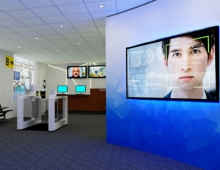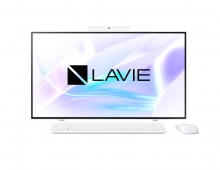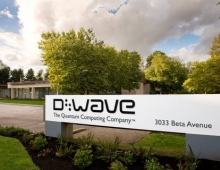
Enhanced home cinema quality in 16:9 widescreen format
NEC supplements its home cinema range with the HT410 and HT510
Many TV films are now broadcast in widescreen format and it is the standard format for DVDs. In the typical TV format (4:3), the ever present black bars spoil the viewer's enjoyment of the film. Home cinema projectors offer advantages in this respect because they project the widescreen image in 16:9 format.
Classic projectors that are used for presentations create black bars above and below the image. The benefit of genuine 16:9 projectors is that their output signal is in the correct format so that the black bars do not appear at all.
In October/November, NEC will be launching two new home cinema projectors with genuine 16:9 widescreen DLP chips. The HT510 has a resolution of 1,024 x 576 pixels and the less expensive model, the HT410, delivers widescreen images in a resolution of 854 x 480 pixels. A perfect home cinema experience is guaranteed because the fan noise of these projectors is as low as 26 decibels, which is quieter than a whisper.
NEC has incorporated a series of image improvement features in the new models to set new standards of low noise, rich detail, colour accuracy and flicker-free images.
- A colour wheel with five colour segments red, green, blue, white and (for the first time) yellow (RGBWY) enhances colour depth, especially in the yellow image sections.
- A new video decoder enhances playback. A patented process is used to transform standard half-sized images into full-sized format. This image conversion technology initially analyses the image to ascertain movement. Stationary parts of the image are constructed out of two successive half-sized images. This prevents any impairment of resolution as a result of interpolation. Moving parts are interpolated. This prevents image degradation through comb effects. The processor also automatically recognises whether film material is in PAL, SECAM or NTSC format and correctly reconstructs the half-size video images. As a result, the detailed moving image sections are played back true to the original.
- Edge adaptive interpolation and edge adaptive noise reduction improve jagged edges in the image without erasing them or causing them to blur.
A generous zoom range of 1.18:1 and a vertical lens shift function for distortion-free projection make it easy to adjust the image on the screen, irrespective of where the projector is positioned in the room. Also, if it is not possible to adjust the height of the image to match the screen without lifting up the projector, the inclination of the projector is electronically calculated and the resulting trapezoidal distortion is automatically corrected.





















